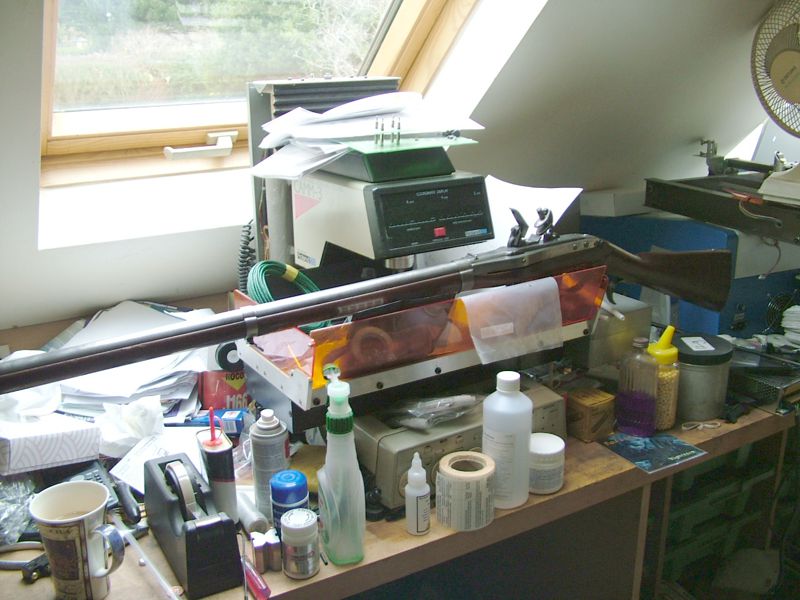As long as I'm thinking Halls...John Hall began building his patented guns in 1811. Even at this date his intent was a military contract. Between 1812-1814, he sent various models to the school of artillery in Albany to test. There is strong evidence that some of these early Halls were used at the battle of Plattsburgh Sept 11, 1814. 1815-1816 saw Hall making his breechloaders for the civilian market. These are cherry or curly maple stocked pieces with brass furniture in small cal. 32-40. He also made fouling pieces. 1817 saw the first military contract for 100 rifles. These are known as m1817 Halls. They are .52 cal with octagonal barrels, round at the muzzle, brass mounted with patch box. They were sent to the US Rifle Regiment at Bellefontaine on the upper Missouri for testing. 1819, Hall was contracted to go to Harpers Ferry to make his rifles for the US government. They weren't as interested in the rifles as they were in Hall's assurance he could build machines that could mass produce guns with interchangeable parts, hence the m1819 Hall. It took 5 years for Hall to make the machines and tooling to actually do the work. The first 1000 M1819s were ready in 1825. From 1825-1840, 19,680 were produced at H.F. An additional 5,700 were made by S.North - all in flint. It wasn't until 1841, production was changed to percussion. Hall was gone by then. The M1819 is a .52 cal rifle with 16 grove riflelling making 1 turn in 9'. Sights are offset to the left to see around the flint mech. All iron parts are browned and painted with brown tinted shellac. Receivers have mottled colors from case hardening. The triggers have an adjuster screw for adjusting pull. Every M1819 was issued with a bayonet, specially designed rifleman's flask holding powder and ball and a tool set. Every 10th rifle was issued with a bullet mold and a main spring vice. The one in this post is a typical m1819. It has an 1826 dated receiver put into an 1837 frame,(it would take a separate post to explain this) done by the Rifle Works at H.F. This rifle is also a veteran of the Civil War on the Southern side. The bottom of the receiver has a Leech&Rigdon 4 square stamp commonly found on L&R pistols made at Greensboro, GA. Leech&Rigdon also did small arms repairs. The stamp was placed to validate the repair for payment. I've had this particular rifle for 23 years and fired 1000s of rounds thru it with no problems. I consider the Hall the best flint military rifle ever made ...just my opinion. G.S.
 [/URL][/img]
[/URL][/img]
 [/URL][/img]
[/URL][/img]
 [/URL][/img]
[/URL][/img]
 [/URL][/img]
[/URL][/img]
 [/URL][/img]
[/URL][/img]

















